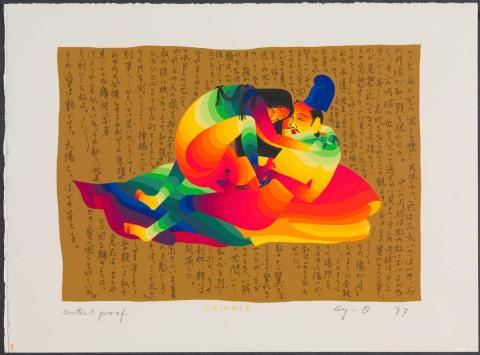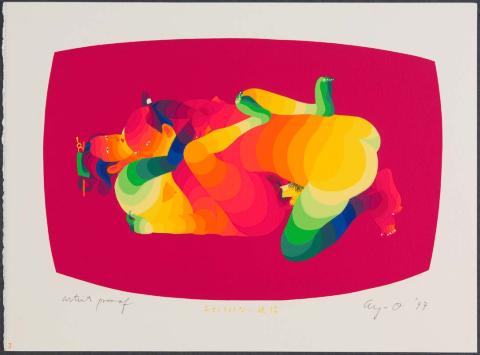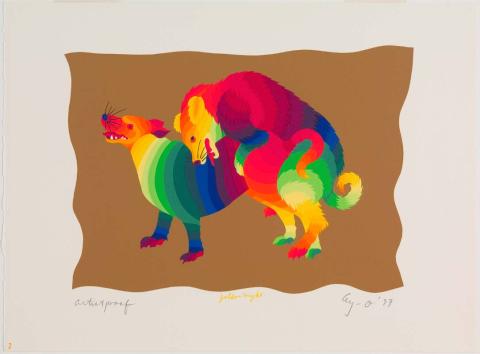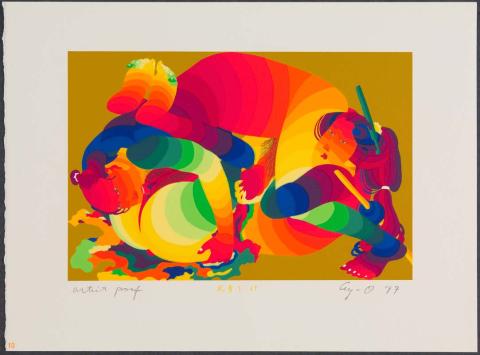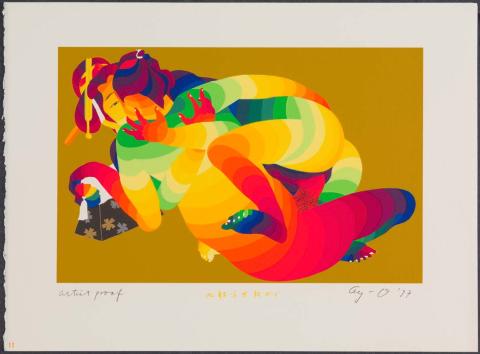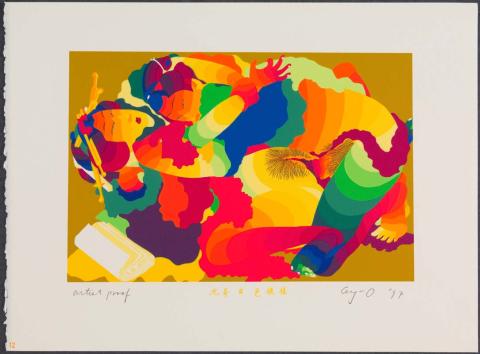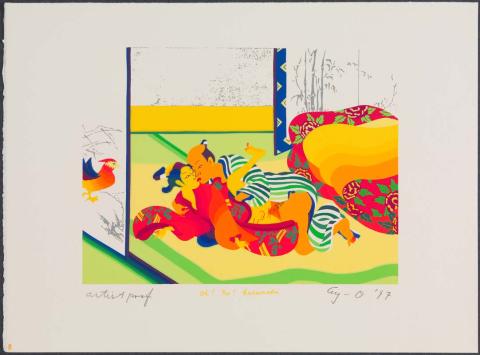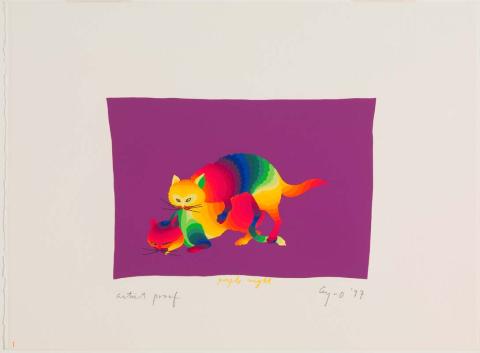ESSAY: Ay-o’s spring pictures
By Reuben Keehan
‘We Can Make Another Future’ September 2014
Ay-O’s particular interest in experimenting with colour is beautifully realised through his use of layered hues to convey form. The motif of the rainbow has pervaded all areas of Ay-O’s artistic practice, enabling him to create works that embrace the full colour spectrum and to explore changes in visual perception. As he explains:
My work has come to feature the phenomenon known as the spectrum or the rainbow, because I have always felt that, since there are colours in the infra-red and ultra-violet range that human eyes cannot perceive, a work of visual art should attempt to employ as many colours that we can perceive as possible.1
In 1964, after encountering American avant-garde composer John Cage’s seminal silent composition 4’33”,2 which paradoxically privileges the ordinary noise of life, Ay-O discovered the motif that would define him. Deliberately seeking a similar anti-art statement, Ay-O opposed the idea that art had to be the perfect balance of motif and colour and rejoiced in the entire spectrum, which earned him the nickname ‘The Rainbow Man’.3 From paintings, prints and sculptures to ‘Rainbow Happenings’, ‘Rainbow Environments’ and a 300-metre-long rainbow banner suspended from the Eiffel Tower in 1987, Ay-O’s use of the rainbow has ranged from carefully layered prisms to experimenting with a variety of figurative imagery, reinterpreted through a psychedelic lens.
His 1997 series, ‘An anthology of shunga’ depicts couples and animals in the midst of lovemaking, their figures constructed from gradations of bright colour. Shunga, literally ‘spring pictures’ (‘spring’ being a euphemism for sex), were popular in Japan during the Edo period (1615–1868), and form part of a preoccupation with sexuality that has permeated Japanese art for centuries. Usually produced in great numbers on small hand-scrolls or bound books, shunga ranged from the instructional to the light-hearted, including a huge array of sexual positions, participants and scenarios intended to intrigue, entertain and stimulate. It was normal for ukiyo-e artists of the Edo period to produce erotic scenes, and these were distributed widely among the public alongside a thriving sex industry. Despite previous attempts at censorship, it was not until the Meiji period (1868–1912), as Japan became increasingly concerned about its image in the West, that such production began to wane. The imagery included depictions of sensual beauty as well as wild and frivolous scenes by artists such as Katsushika Hokusai, whose shunga works are credited as a precursor to erotic manga so prevalent and popular in Japan today.
Ay-O reinterprets classic shunga imagery by rendering the characters and their costumes in all the colours of the rainbow; fine garments were desirous features of earlier traditions, enhancing the overall appeal of images. Some works pay homage to Suzuki Harunobu’s images of the eighteenth century, where entangled couples were depicted draped in finery in ornamental interiors and bathed in vivid colour. Industries producing fetishised consumer products, as well as role‑play costumes, thrive in Japan today, where the line between sexual desire and consumer novelty is often blurred; similarly, ‘An anthology of shunga’ transports the sexual encounter into the realm of fantasy.
Ay-O’s shunga works apply his anti-art style to a longstanding, but at times marginalised artistic tradition, balancing the widespread fascination for the rainbow with the equally intriguing role of erotic culture in contemporary society.
Endnotes
- Ay-O, ‘Production notes’, in Ay-O [exhibition catalogue], Fuji Television Gallery, Tokyo, 1984, unpaginated.:
- 4’33” 1964 is described as a composition in three movements for any instrument or combination of instruments for which the score instructs the performer(s) not to play their instruments for the duration of 4 minutes and 33 seconds. The work actually consists of the environmental noise heard while an audience listens to the ‘silence’.:
- CB Liddell, ‘The varied colors of artistic process’, Japan Times, 1 March 2012, viewed 3 April 2014.
Connected objects
Metadata, copyright and sharing information
About this story
- Subject
